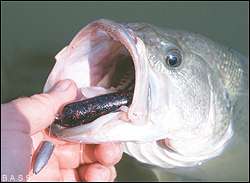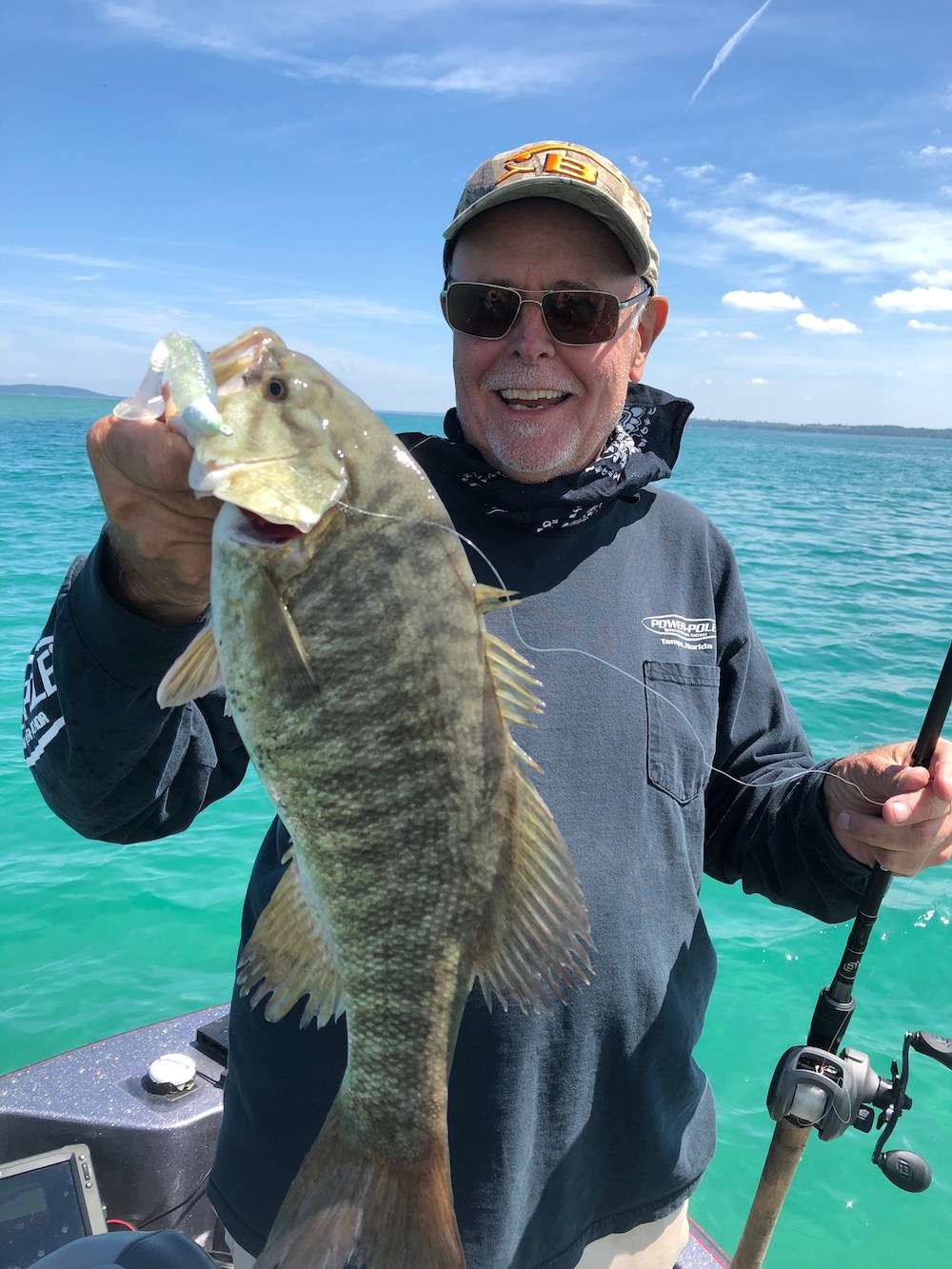
For many Bassmasters, competing in tournaments is what bass fishing is all about. Every angler with a competitive streak, whether he fishes against other members of his local bass club or on the pro circuit, dreams of scoring a great catch in a tournament and ending up in the winner's circle.
Dreams are one thing, but if you hope to be a successful tournament angler in today's highly competitive bass fishing climate, know this: Fishing pressure is a reality that must be factored into your game plan. Nationwide, a growing number of bass waters are subject to unrelenting pressure from anglers who are more knowledgeable and better equipped than ever, resulting in a bass bite that's getting tougher every season.
We asked two B.A.S.S. pros known for their strategic approaches to tournaments how they deal with fishing pressure. Whether you fish in pot tournaments or the big leagues — or just fish for fun on a busy weekend — we're certain you'll pick up some useful pointers here.
Two kinds of pressure
Kentucky pro Dan Morehead is one of the more impressive young stars on the cast-for-cash circuit. "When you analyze it, there are two kinds of fishing pressure," he tells BASSMASTER. "There's long-term local pressure, such as you commonly find on lakes near large metropolitan areas — Lake Lanier near Atlanta, Priest Lake in Nashville, or the Los Angeles-area reservoirs, for example. These lakes may be covered with bass boats seven days a week and subjected to unrelenting pressure from anglers with varying degrees of skill.
"Then there's short-term pressure; this generally occurs on weekends and whenever a tournament is taking place on the lake. Here, bass are hammered by anglers over a concentrated time period, sometimes several days in a row."
Long-term pressure educates bass to be more selective regarding what they bite, Morehead has found. "There's no such thing as a dumb bass. These are highly sophisticated predators we're dealing with — they'll do what it takes to survive. Over time, pressured bass will turn off certain lures or colors. Local anglers may be slow to catch on, and will keep casting the same lures that caught fish last year or the year before. When they catch fewer bass, they often complain that the lake has been fished out. In reality, the bass are in the same places they've always been, but are more choosy about what they bite."
Short-term pressure from highly skilled anglers can quickly impact the bass population, even on lakes not typically subject to intense pressure. "When a major tournament hits the lake, its effect is cumulative. Often, everybody catches fish the first day, then the bite gets progressively slower as the event plays out. Concentrated pressure from skilled fishermen often makes bass head for the deepest or thickest cover they can find. You may start out catching 'em on points or flats with crankbaits or spinnerbaits, then you have to flip tubes in the grass to stay with 'em."
Catching highly pressured bass demands obsessive attention to detail, Morehead insists. "The more intense the pressure, the more 'technical' you have to fish. You must determine how to give your presentation that imperceptible edge that convinces bass to bite. A stealthy approach becomes hypercritical. Many bass anglers are hunters as well, and are adept at keeping a low profile when they're after deer or turkey. But for some reason, they throw caution to the wind when it comes to bass. You can't be successful in a high-pressure situation by slamming storage box lids or banging your trolling motor into the cover you're fishing."
Morehead comments on other strategies for fishing a tournament on a high-pressure lake:
Downscale — "Pressured bass usually bite a small lure more readily than a big bait. This extends across the entire lure spectrum, from jigs to topwaters."
Same zone, different bait — "Determine what local fishermen or other tournament competitors are using, then throw an alternative lure capable of working the same depth or cover. If everyone else is chunking a spinnerbait around shallow cover, I may use a shallow running crankbait like a Mann's 1-Minus."
Subtle patterns — "Pay close attention to where your bites are coming from. Often, there's something slightly different about the places holding quality fish. Maybe the better fish are on docks with wood pilings instead of those with plastic supports. Maybe they're on stumps close to a little ditch. In a tough tournament, it's a given that the weights aren't going to be huge; many competitors will be bunched up within a few ounces of one another. Once you figure out a pattern for bigger fish, you can put together a milk run of similar places and go home with a decent paycheck."
Naturalize your colors — "Highly pressured bass have learned to avoid unnatural-looking prey. Stick to realistic lure colors: greens, browns, shad and craw patterns."
Slow down/speed up — "Surprisingly, either approach can work on pressured bass. Try a superslow retrieve with a tube bait or jig, or a power approach, burning a spinnerbait or lipless crankbait to provoke a reaction bite."
Multiple presentations — "I drew Denny Brauer (as my partner) the first day of my first B.A.S.S. event back in '95. I remember making three pitches to a laydown tree and leaving it. Denny made 37 consecutive pitches to the same tree and caught a 3-pounder on his 38th. He told me, 'Imagine there's someone poking you in the chest with his finger again and again. Sooner or later, you're gonna haul off and pop him.' You can provoke a bass into biting if you're persistent."
Probe dense cover — "Most local fishermen won't mess with thick brush and grass. If a lake doesn't have a lot of extra-thick cover, sink your own — bass will move into fresh cover in a hurry. I put out 12 green sycamore tops during the final hour of practice in one B.A.S.S. event and caught keepers out of every one I went to the following morning."
Never give up — "Some bass are totally unaffected by angler pressure. During practice for one tournament, I caught a 4 1/2-pounder out of a tree; this fish had big spots around its eyes, giving it a raccoonlike appearance. I caught the same fish in the same spot the next day during competition. Steven Browning (another pro) borrowed a 1-Minus from me during a Texas tournament; he'd broken off a big fish on his only lure like it. Next morning, he went to the same spot and caught an 8-14 with his 1-Minus stuck in the side of its head. Never give up on highly pressured bass; they may surprise you."
VanDam's high-pressure tactics
"Whether you fish competitively or solely for fun, you'd better learn how to deal with highly pressured bass, because our lakes will only continue to get more crowded," 2001 Classic champ Kevin VanDam declares. "Bass become spooked from heavy pressure. The predator now senses it's the prey, and it reacts by being very cautious about biting."
Pressured bass typically react by pulling tighter to cover, the Michigan angler says. "As their strike zones shrink, accurate presentations become paramount. The fish aren't in an ambush mode, so they won't rush out and grab a passing lure. You've literally got to hit the bass on the nose if you expect to get bit."
VanDam recommends natural lure colors on pressured lakes, even when the water is dirty.
"Bass don't have any problem finding shad and crawfish, even in murky water," he says. "When other fishermen are throwing chartreuse, I'll probably be using olive drab. Boat positioning also is critical. If your bait splashes down a couple of feet from your target, you'll alert the fish to your presence. Get into position so your first presentation to cover is perfect. In a pressured situation, you have to either finesse 'em into taking your bait, or shock 'em into biting."
One of VanDam's favorite lures on a high-pressure lake is a Strike King tube bait: "Most weekend fishermen don't fish tubes, so bass have not been conditioned to them. A tube is especially deadly in provoking a reaction strike because of its erratic fall." The Classic champ may also use a heavier than normal sinker or jig — up to 3/4 ounce — when the bite is tentative, even in extremely shallow water. "When the lure drops straight down in front of the fish like a bowling ball," he explains, "it'll often provoke a reaction strike."
On the CITGO BASSMASTER Tournament Trail, pressure can come from unexpected places, VanDam points out. "Going into the second day of the 2001 Classic on the Louisiana Delta, I was in third place and had several spectator boats following me everywhere I went. This meant I had to fish my targets in the order I came to them, before traffic from following boats muddied the water. Some of the spectators would start fishing a spot as soon as I left it, hurting my chances of returning and catching fish there."
Day 3 found VanDam in the lead; this exacerbated the spectator boat problem. "By then I had 10 boats following me to my fishing area. By 11 a.m., I'd caught two keepers. I knew I had to leave the spot by 1:30 p.m. to make it back on time. I also knew the spectators would run back to the Superdome before long so they could get a good seat for the weigh-in. I decided to give them a reason for leaving me so I could let the area I wanted to fish calm down." VanDam opted to quit fishing and ran 20 minutes to a fueling station. To his relief, all but one spectator boat headed back to New Orleans. "I then ran back to my hole and filled out my limit. I spent 10 minutes fishing the same log before finally catching my fifth keeper."
VanDam gives more advice on scoring quality fish from high-pressure lakes:
When you've fished a spot for a while without success and suddenly catch a bass, get your lure back in the water as fast as you can. Often, the bite triggers an aggressive reaction from a school of bass in the area, and you can catch several more fish in short order.
Fishing windblown areas helps conceal your presence, especially in clear lakes.
Avoid casting a shadow over your target.
In spring tournaments, remember that not all bass will be spawning at the same time. If other competitors are targeting bedding fish, VanDam may fish for pre- or post-spawners; these bass aren't being pressured and will often bite more readily.
If you catch a bass or two from a spot and then the bite dies, give it a brief rest. Return in an hour or so, and you'll often score a couple more fish.
Kevin VanDam's new book, Secrets of a Champion, is an in-depth look into the Classic champ's bass fishing strategies. Co-authored by BASSMASTER Senior Writer Louie Stout, it's available by calling 800-544-9343.





